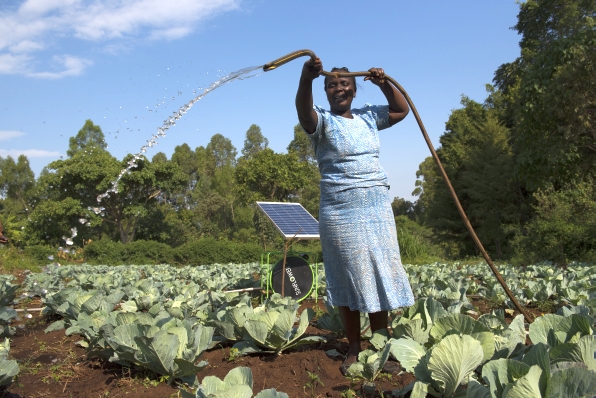A national platform aimed at promoting farmer-led and market based smart water solutions for improving smallholder irrigation in Kenya has been launched.
The National Irrigation Acceleration Programme (NIAP) brings together stakeholders interested in smallholder irrigation in order stimulate networking and evidence based advocacy on irrigated agriculture in the country.
Despite Kenya having irrigation potential of 1.342m ha, only 161, 840 ha representing 12 per cent of the potential had been brought under irrigated agriculture by 2013 according to statistics by the ministry of agriculture.
The initiative which is spearheaded by the Jomo Kenyatta University of Agriculture and Technology based Water Research and Resource Centre and the not-for-profit international development organization, SNV is the first in the country to bring together relevant stakeholders at the national level.
Related content
Drip irrigation enables farmers to cultivate more with a few drops
Jomo Kenyatta University launches automated irrigation system that saves water and increases yields
Why you need drip irrigation for higher profits

Irrigating a farm in Kenya using a solr powered water pump/courtesy.
To fully develop the capacity, WARREC Director, Prof. Bancy Mati said Kenya can leverage smart solutions like harvesting and storage of surface water. The platform, she added, would be critical in advancing irrigation agenda in the country.
“It will allow expert knowledge to reach farmers while ensuring that issues affecting the famers reach the decision makers, for a more harmonized and targeted intervention,” said Prof. Mati.
The launch of NIAP follows successful pilots in five counties, Machakos, Nakuru, Meru, Laikipia and Uasin Gishu. The Irrigation Acceleration Programmes (IAP) in the devolved units was supported by the SNV’s Smart Water for Agriculture programme.
Irrigated agriculture could significantly hoist the government’s desire to achieve food and nutritional security. Equally, without adopting innovative water solutions, the country could face 31 per cent deficit risk between water demand and supply by the year 2030.
According to James Mwangi of Laikipia Wildlife Forum, the County’s IAP managed by 14-member management committee, has supported over 400 stakeholders within six clusters. Among key issues to be addressed by the NIAP are policy review, information collation and dissemination, value chain bottlenecks, coordination and capacity building.
Write comment (0 Comments)




 Mesh Water Tank. It is used for water harvesting and storage and it does not require a concrete base. Photo: Zablon Oyugi.
Mesh Water Tank. It is used for water harvesting and storage and it does not require a concrete base. Photo: Zablon Oyugi.










